LGT8F328P (ADC 12bit [8ch] / DAC 8bit [1ch] 30 I/O) Compatible Arduino nano 3.0
![LGT8F328P (ADC 12bit [8ch] / DAC 8bit [1ch] 30 I/O) Compatible Arduino nano 3.0](https://j.lnwfile.com/_/j/_raw/wv/rg/y0.jpg)
![LGT8F328P (ADC 12bit [8ch] / DAC 8bit [1ch] 30 I/O) Compatible Arduino nano 3.0](https://j.lnwfile.com/_/j/_raw/wv/rg/y0.jpg)
![LGT8F328P (ADC 12bit [8ch] / DAC 8bit [1ch] 30 I/O) Compatible Arduino nano 3.0](https://j.lnwfile.com/_/j/_raw/4o/2h/gw.jpg)
![LGT8F328P (ADC 12bit [8ch] / DAC 8bit [1ch] 30 I/O) Compatible Arduino nano 3.0](https://j.lnwfile.com/_/j/_raw/fr/4d/a0.jpg)
![LGT8F328P (ADC 12bit [8ch] / DAC 8bit [1ch] 30 I/O) Compatible Arduino nano 3.0](https://j.lnwfile.com/_/j/_raw/wx/ng/ts.jpg)
![LGT8F328P (ADC 12bit [8ch] / DAC 8bit [1ch] 30 I/O) Compatible Arduino nano 3.0](https://j.lnwfile.com/_/j/_raw/oz/n9/82.jpg)
![LGT8F328P (ADC 12bit [8ch] / DAC 8bit [1ch] 30 I/O) Compatible Arduino nano 3.0](https://j.lnwfile.com/_/j/_raw/t7/8a/15.jpg)
| รหัสสินค้า | M3999 |
| หมวดหมู่ | Arduino Compatible Board |
| ราคา | 70.00-85.00 บาท |
| น้ำหนัก | 5 กรัม |
| ลงสินค้า | 6 มี.ค. 2565 |
| อัพเดทล่าสุด | 7 มี.ค. 2565 |
| LGT8F328P (ADC 12bit [8ch] / DAC 8bit [1ch] 30 I/O) Compatible Arduino nano 3.0 ![LGT8F328P (ADC 12bit [8ch] / DAC 8bit [1ch] 30 I/O) Compatible Arduino nano 3.0](https://j.lnwfile.com/_/j/_resize/200/200/hm/dw/oq.jpg)
หยิบลงตะกร้า | LGT8F328P (ADC 12bit [8ch] / DAC 8bit [1ch] 30 I/O) Compatible Arduino nano 3.0 (CH340C) ![LGT8F328P (ADC 12bit [8ch] / DAC 8bit [1ch] 30 I/O) Compatible Arduino nano 3.0 (CH340C)](https://j.lnwfile.com/_/j/_resize/200/200/4o/2h/gw.jpg)
ขออภัย สินค้าหมด |
รายละเอียดสินค้า
LGT8F328P QFP32L ADC 12bit 4096 [9ch] (Nano8F328P 8ch)
DAC0 8bit 1ch 27 OUTPUT (Nano8F328P 25 I/O) Compatible Arduino Nano 3.0
LGT8F328P Board Features
· 8F328P-U MCU used by the LGT8F328P, is a Atmel MEGA328P compatible chip.
· LGT8F328P architecture design is relatively new, peripheral functions far stronger than Atmel MEGA328. Especially the program encryption ability is far more than MEGA328.
· LGT8F328P can use 3V3 and 5V power supply running at 16MHz frequency, excellent level compatibility.
· Built-in high-precision RC, no external crystal can be stable operation.
· Less peripheral parts, circuit design is simple.
· 12-bit ADC (analog-to-digital conversion) 8 channel ( 500Ksps)
· 1 channel board DAC 8 bit
· Owned GUID (unique ID) can be used for chip program encryption
· Built-in internal 1.024V / 2.048V / 4.096V ± 1% calibratable reference voltage source
· PWM pin number: D3, D5, D6, D9, D10, D11
The feature compare
| Feature | LGT8F328P | atmega328P |
| DAC output | Yes (D4) | - |
| ADC | 12bit (9 channel) | 10bit (8 channel) |
| ADC Sampling rate Max. | 500KSPS | 15kSPS |
| Analog Comparator | 2 | 1 |
| unique ID | Yes | - |
| Internal reference resoltuion | ±0.5% | ±1.5% |
| PWM dead zone control | Yes | - |
| High current push - pull PWM | Yes | - |
| Computing Accelerator (DSC) | Yes | - |
| Stacking expansion system | Yes | - |
| Speed | 32Mhz | 16Mhz |
| OUTPUT | 27 pin | 20 pin |
| INPUT | 30 pin | 23pin |
Parameters
| MCU | LGT8F328P Nano pinout |
|---|---|
| FLASH | 32Kbytes |
| SRAM | 2Kbytes |
| E2PROM | 0K/1K/2K/4K/8K(FLASH Share) |
| PWM | 8 |
| Frequency | 16MHz(Maximum 32MHz) |
| ADC | 8-channel 12-bit high-speed ADC |
| DAC | 8-bit programmable DAC |
| UART | 1 |
| SPI | YES |
| TWI(I2C) | YES |
| GUID | YES |
| Internal Vref | 1.024V/2.048V/4.096V ±0.5% |
| System logic level | 5V |
https://github.com/LGTMCU/Larduino_HSP
driver HT42B534
https://www.electrodragon.com/w/File:Ht42B534.zip
*
https://www.holtek.com/productdetail/-/vg/42B534-x.
https://github.com/RalphBacon/LGT8F328P-Arduino-Clone-Chip-ATMega328P
https://github.com/LGTMCU/Larduino_HSP
https://www.holtek.com/productdetail/-/vg/42B534-x.
https://github.com/RalphBacon/LGT8F328P-Arduino-Clone-Chip-ATMega328P
http://www.lgtic.com/
LGT8F328P DAC0
// The LGT8F328P has an 8-bit DAC. Let's talk about how to use the DAC.// It should be noted that the ADC and DAC use the same reference source.// If you change the reference source, the two reference sources are changed at the same time.//// Output a fixed voltage value://----------------------------int dac = 4; //Define dac pinvoid setup() {// pinMode(DAC0, ANALOG); //Initialize the dac pin to analog output modepinMode(dac, ANALOG); //Initialize the dac pin to analog output modeanalogReference(INTERNAL2V048); //Set the reference source to 2.048 internal reference}void loop() {analogWrite(dac, 100); // DAC is 8-bit precision and the range is 0-255. 255 is the reference source upper limit.}
LGT8F328P DAC Sinewave
//--------------------------// Output sine wave#define PI 3.1415926535897932384626433832795 //Define the constant πvoid setup() {pinMode(4, ANALOG); //Configure the DAC outputanalogReference(INTERNAL4V096); //Internal reference source 4.096V}void loop(){for(float i=0;i<=2;i=i+0.01) //The starting point is 0, the termination is 2π, and the sampling rate is 0.01{float rad=PI*i;float Sin=sin(rad);long intSin=Sin*300; //amplify the data by 300 times, take the integerbyte val=map(intSin,-300,300,0,255); // map to 8 bits DAC precisionanalogWrite(4, val); //DAC output}}//----------------------------------
LGT8F328P (QFP32L) TEST
I/O D20/D21/D22/D23/D26 (output mode)
/*LGT8F328P QFP32LTEST OUTPUT modeLG8F328P | Arduino PINPE0/SWC | D22PE1/ADC6 | D20PE6/AVERF| D26PE2/SWD | D23PE3/ADC7 | D21*/// the setup function runs once when you press reset or power the board#define LED_BUILTIN D13void setup() {// initialize digital pin LED_BUILTIN as an output.pinMode(LED_BUILTIN, OUTPUT); // PB5 | D13pinMode(D20, OUTPUT); // PE1/ADC6 | D20pinMode(D21, OUTPUT); // PE3/ADC7 | D21pinMode(D22, OUTPUT); // PE0/SWC | D22pinMode(D23, OUTPUT); // PE2/SWD | D23pinMode(D26, OUTPUT); // PE6/AVERF| D26}// the loop function runs over and over again forevervoid loop() {digitalWrite(LED_BUILTIN, HIGH); // turn the LED on (HIGH is the voltage level)digitalWrite(D20, HIGH);digitalWrite(D21, HIGH);digitalWrite(D22, HIGH);digitalWrite(D23, HIGH);digitalWrite(D26, HIGH);delay(1000); // wait for a seconddigitalWrite(LED_BUILTIN, LOW); // turn the LED off by making the voltage LOWdigitalWrite(D20, LOW);digitalWrite(D21, LOW);digitalWrite(D22, LOW);digitalWrite(D23, LOW);digitalWrite(D26, LOW);delay(1000); // wait for a second}
LGT8F328P (QFP32L) uses the unique ID
// Traditional Arduino UNO, NANO, Pro Mini have no unique ID, if you do something that needs to be// encrypted. . . . With the core design of AVR MEGA328, Huaqiang North has a very low cost. . .// Low enough you can't imagine!// LGT8F328P anti-crack performance is far better than MEGA328, after all, is the Chinese designed chip, crack // the big country design chip. . . The first consideration is how to prevent cracking. . . . The unique ID is a// necessary means of software encryption.
void setup() {Serial.begin(9600); // Initialize the serial portUint32_t guid = (GUID3 << 24) | (GUID2 << 16) | (GUID1 << 8) | GUID0; // Assign a unique ID to guidSerial.print("Unique ID LGT8F328P : ");Serial.println(guid); // Serial output unique ID}void loop(){}
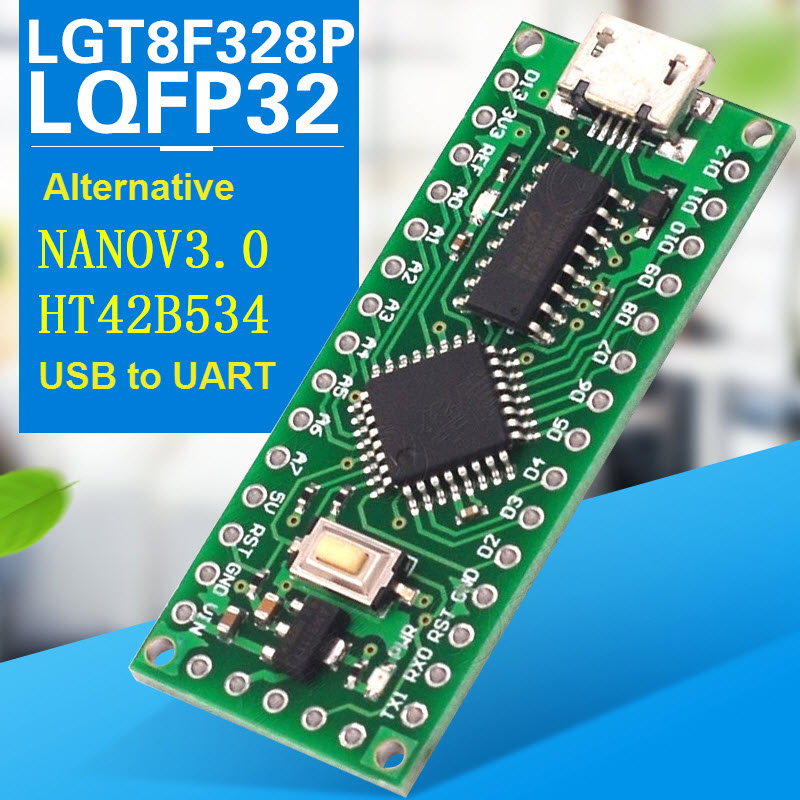
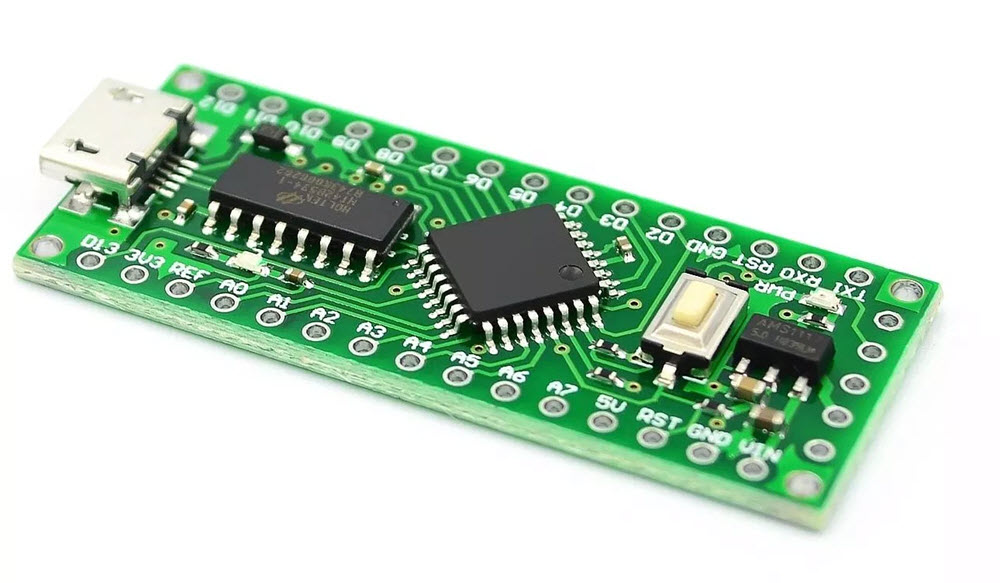
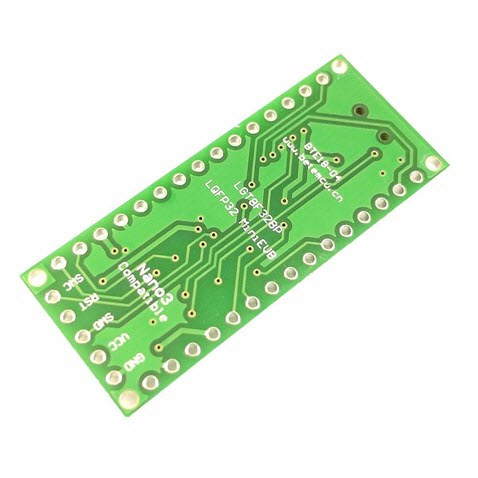
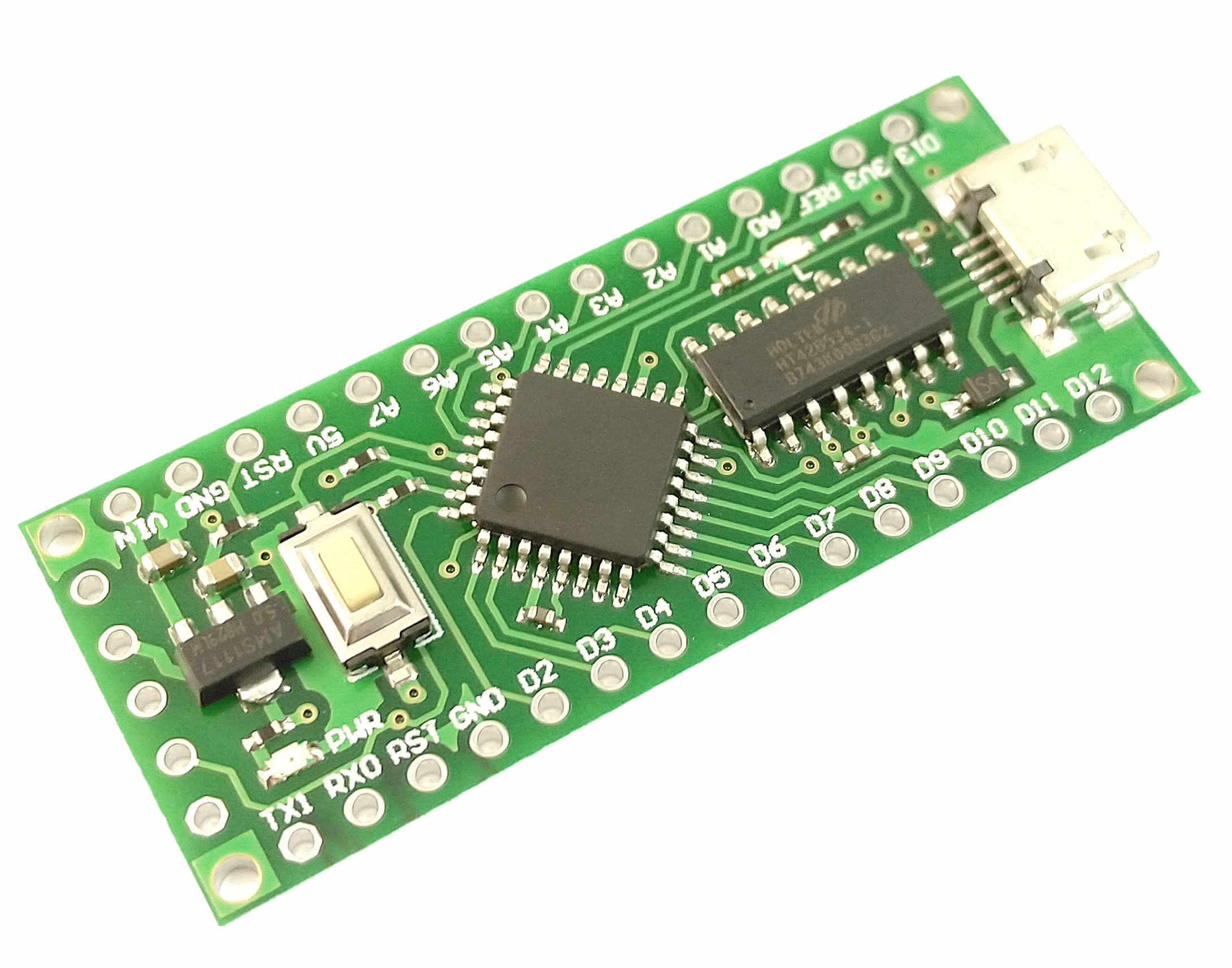
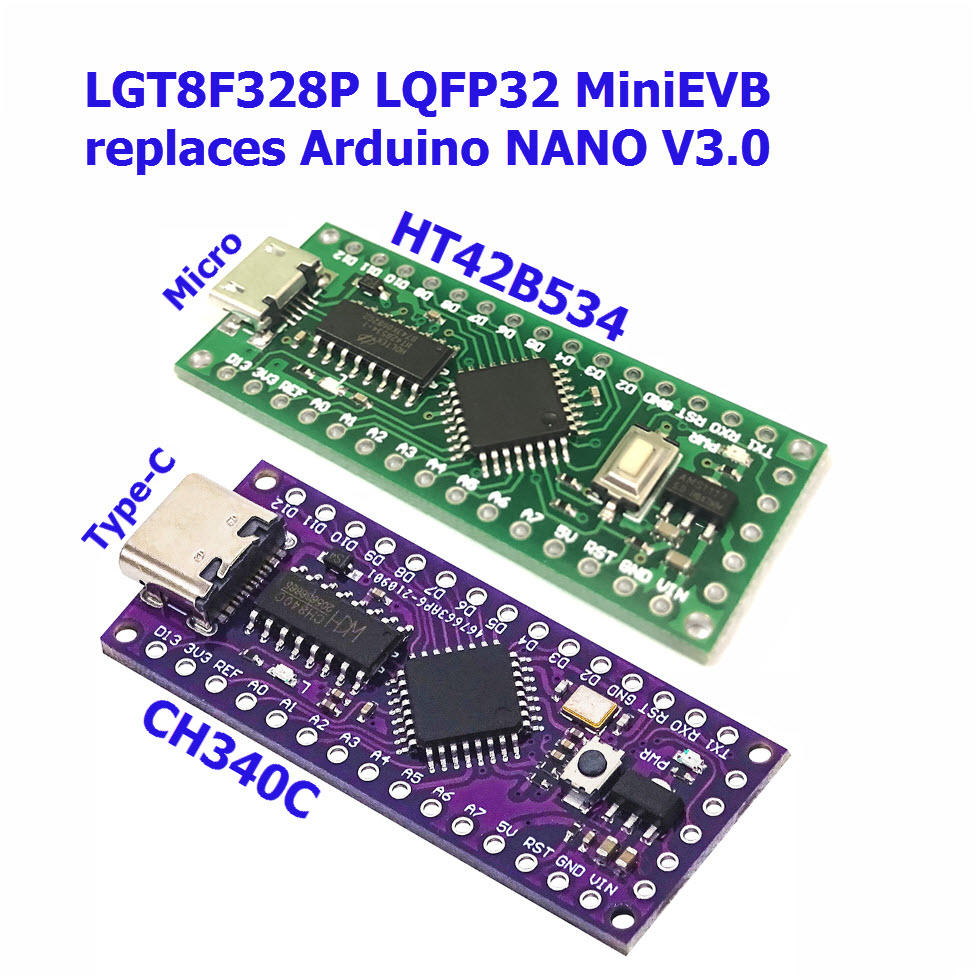
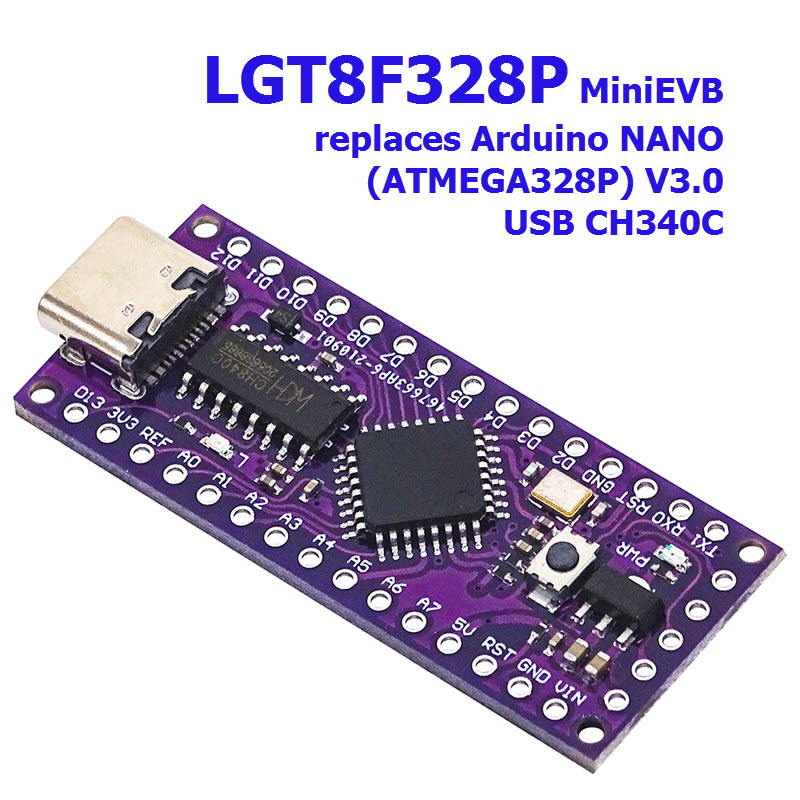
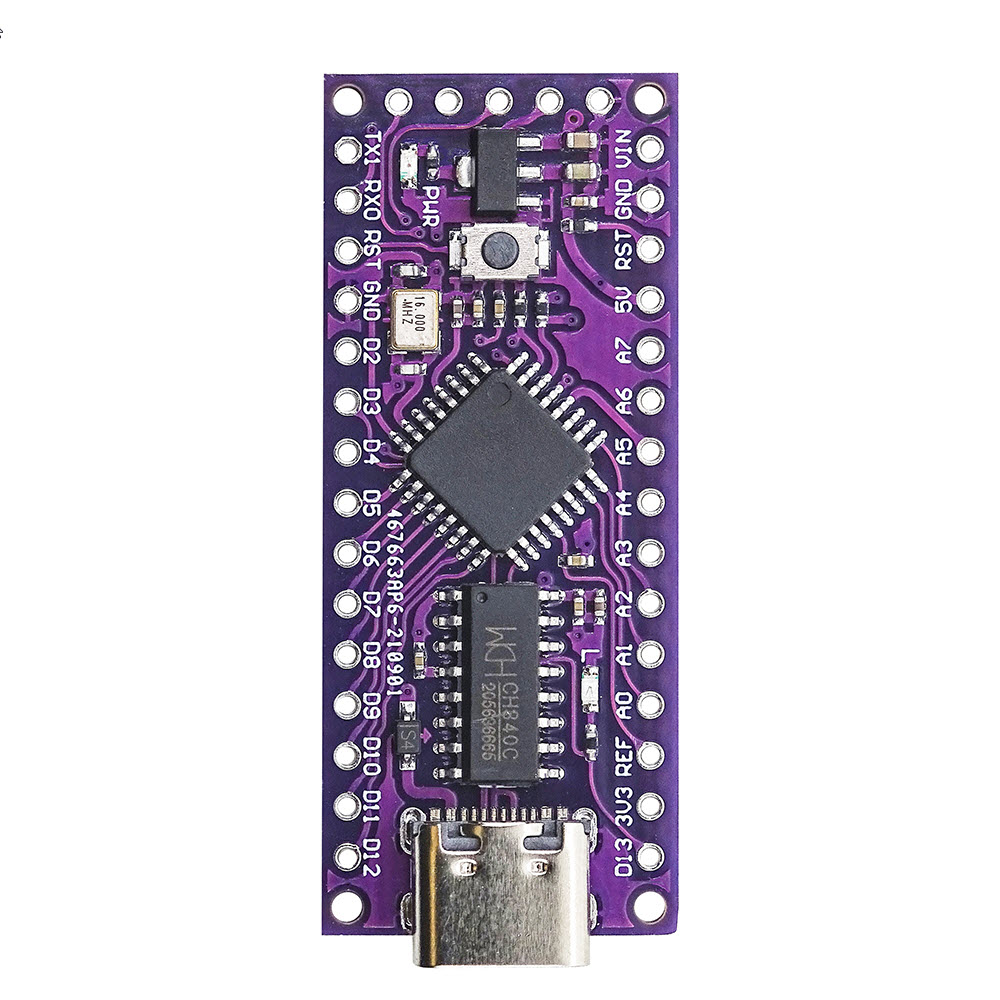
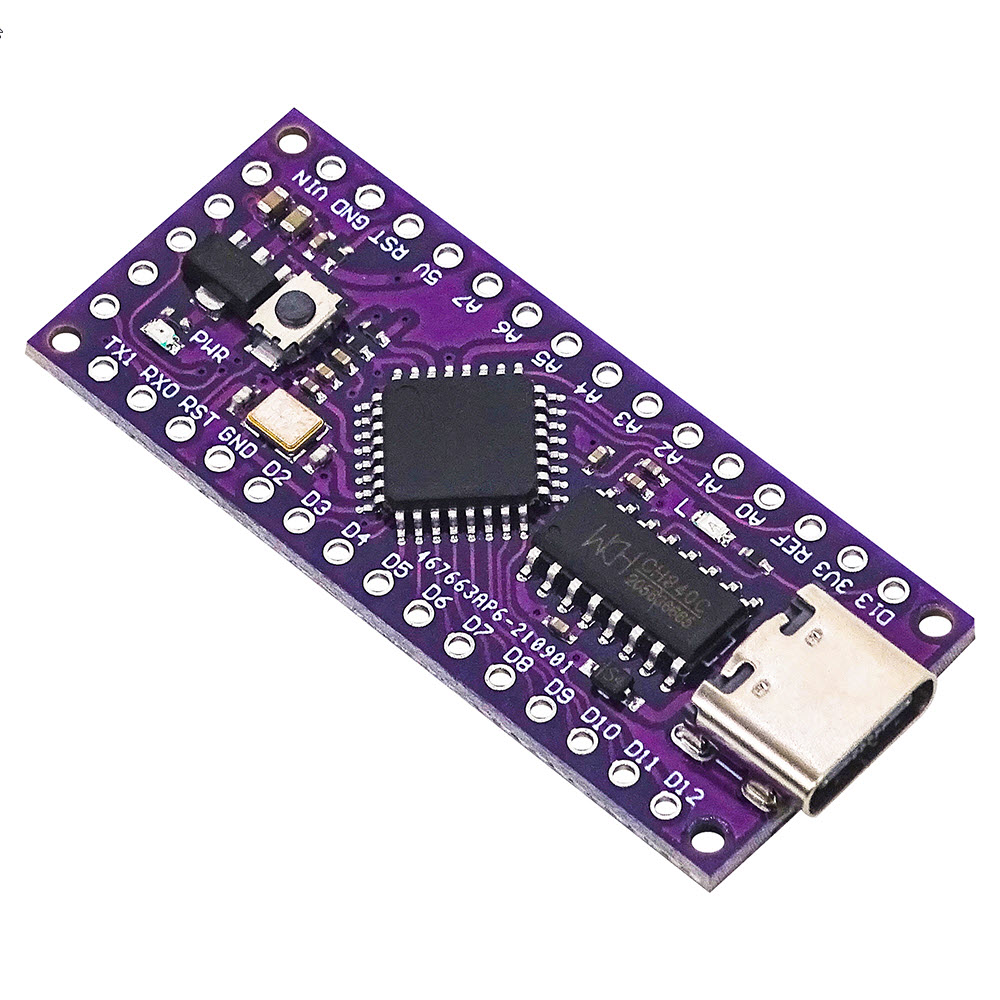


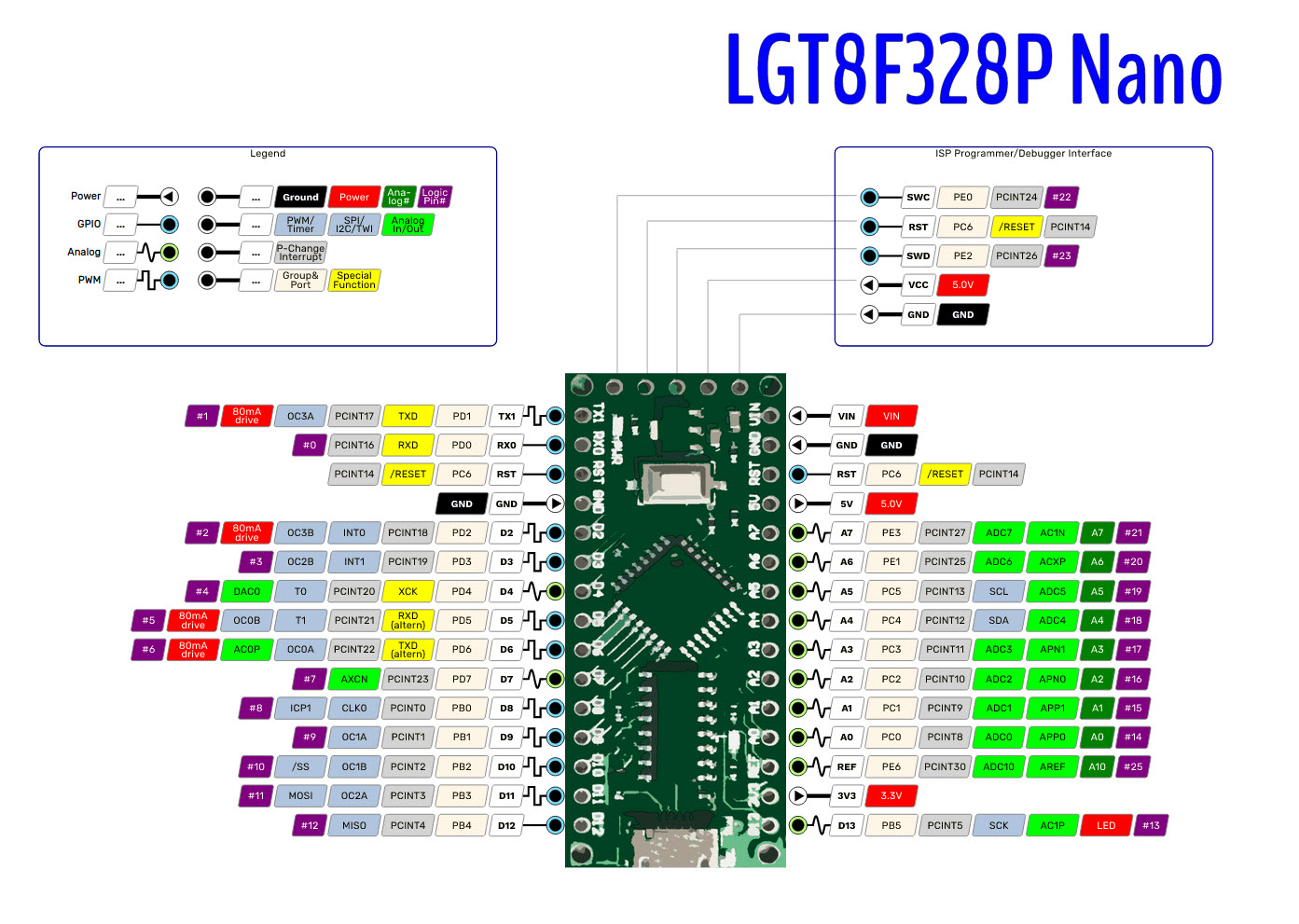
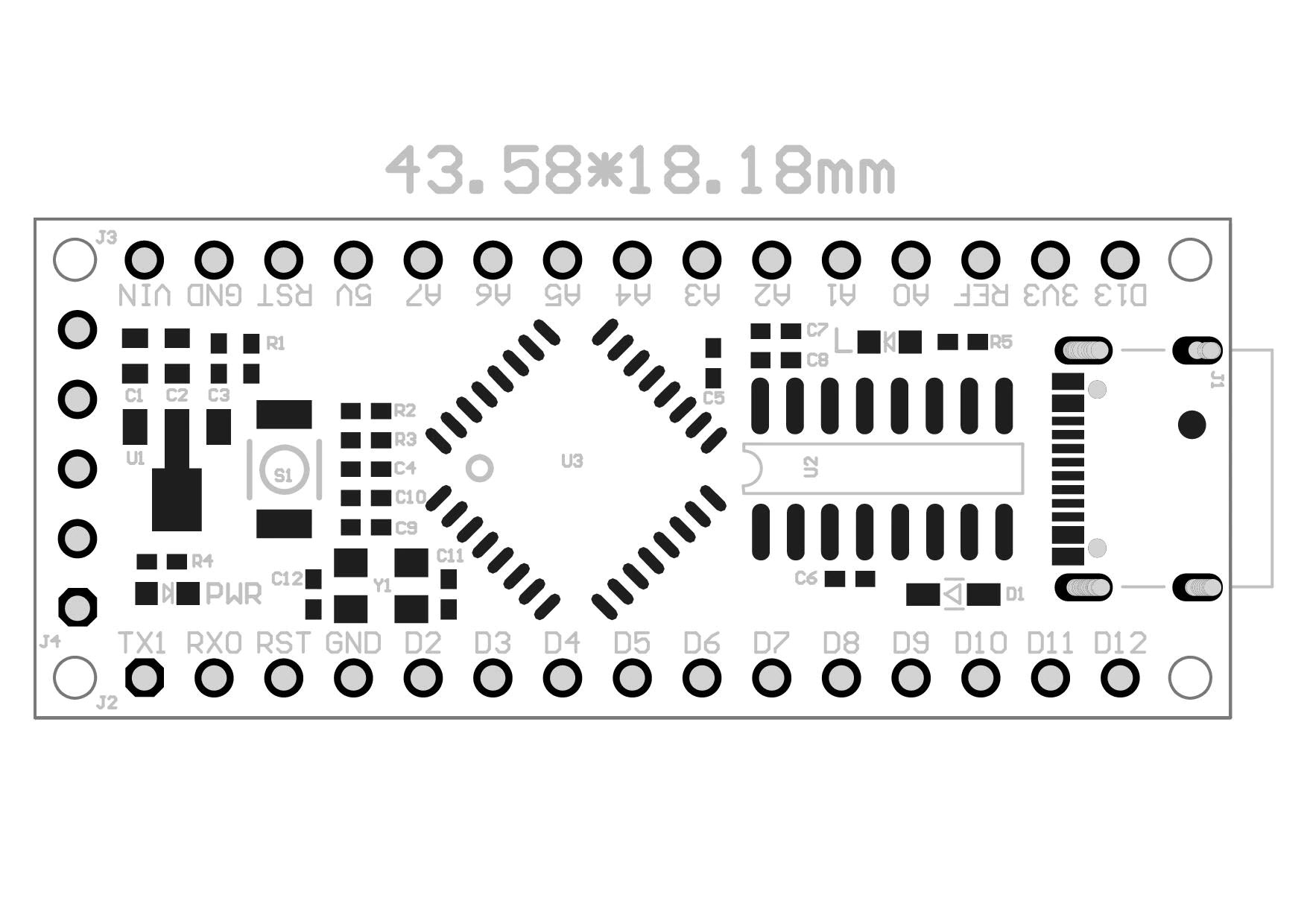
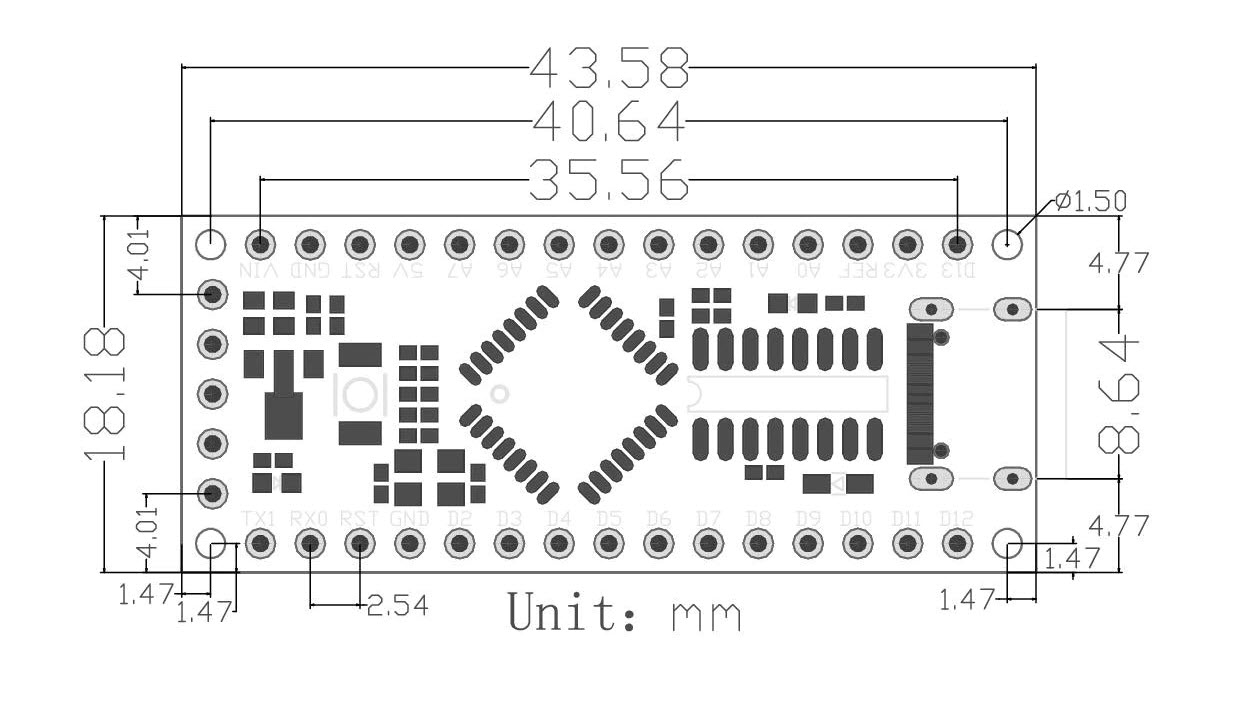
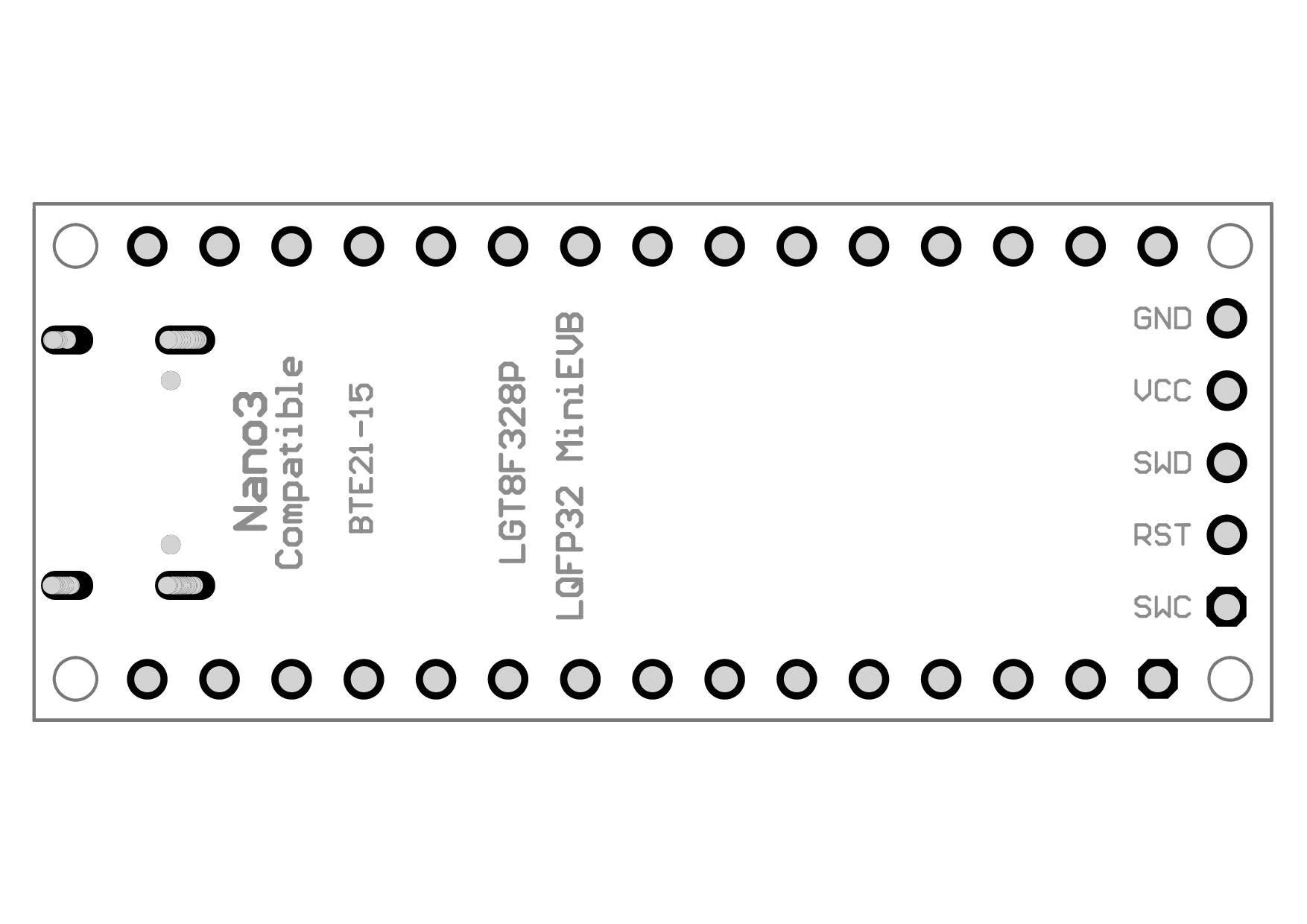
*
เงื่อนไขอื่นๆ
Arduino NANO clone on LGT8F328P chip from LogicGreen with a clock speed of up to 32 MHz from both the internal PLL synthesizer and the external quartz or quartz oscillator, the system clock control register is configured in the bootloader.
· High-performance low-power 8-bit core LGT8XM
· RISC Extended Architecture
· 131 instructions, more than 80% for one-touch implementation.
· 32x8 general purpose working register.
· 32MHz work up to 32MIPS performance efficiency.
· Internal single-ended factor (8x8)
· Nonvolatile program memory and storage space data.
· Chip 32 KB can be programmed in mode online.
· Internal memory data SRAM 2 KB.
· Programmable analog interface E2PROM, support access bytes.
· New software encryption algorithm for security user code.
· Two 8-bit timers with independent prior support divider, the output mode of comparison.
· Two 16-bit timers with independent support Pre-block to enter and compare input data.
· Built-in 32KHz calibration RC generator for function counter in real time.
· Can support up to 9 PWM outputs, 4 programmable dead zone control.
· 12-channel 12-bit high-speed analog-digital Converter (ADC)
- an additional internal, external reference voltage source.
- Differential gain channels with programmable gain (x1 / 8/16/32).
· Automatic control voltage threshold.
· 2 analog comparators (AC), support for expansion from the input channel of the ADC.
· Internal voltages of calibrated values - 1.024V / 2.048V / 4.096V ± 1%
· 8-bit programmable DAC that generates the source reference voltage.
· Programmable Watchdog Timer (WDT).
LGT8F328P LQFP32 Parameters and Interfaces
· Programmable synchronous / asynchronous serial interface (USART / SPI).
· Synchronous peripheral interface (SPI), programmable master / slave mode.
· Two-wire serial interface (TWI) compatible with I2C master-slave mode.
· 16-bit Digital Arithmetic Accelerator (DSC), which supports direct 16-bit data access.
· Special processor feature SWD Dual On-chip Debug / Production Interface.
· Support external interrupt and support interrupt I/ O level .
· Built-in power reset circuit (POR) and programmable low voltage detection circuit (LVD).
· Built-in 1% can be calibrated 32 MHz RC oscillator, support for multi-frequency output.
· Built-in 1% can be calibrated by a 32KHz RC generator.
· External support 32,768KHz and 400K ~ 32MHz crystal input.
· 6x high current push-pull drive IO, support for
· high-speed PWM applications
· I/O and package: QFP48 / 32L
· Lowest power consumption: 1uA @ 3,3V
Workspace
· Operating voltage: 1.8 V ~ 5.5 V
· Operating frequency: 0 ~ 32 MHz
· Operating temperature: -40C ~ + 85C
· HBM ESD:> 4KV
วิธีการชำระเงิน
ชำระเงินผ่านธนาคาร
ชำระเงินด้วยการ Scan QR



ชำระเงินออนไลน์
- ค่าธรรมเนียม 3.9% + 11 THB
- การชำระผ่าน PayPal คุณไม่จำเป็นต้องแจ้งชำระเงิน เนื่องจากระบบจะจัดการให้คุณทันที ที่คุณชำระเงินเสร็จสมบูรณ์
SEARCH(ค้นหา)
CATEGORY
TRACKCODE
TRACK&TRACE
CONTACT US
STATISTICS
| หน้าที่เข้าชม | 5,175,310 ครั้ง |
| ผู้ชมทั้งหมด | 1,574,650 ครั้ง |
| ร้านค้าอัพเดท | 1 ต.ค. 2568 |
MEMBER
- ระดับ{{userdata.dropship_level_name}}
- ไปหน้าหลักตัวแทน
- ทั้งหมด {{(order_nums && order_nums.all)?'('+order_nums.all+')':''}}
- รอการชำระเงิน {{(order_nums && order_nums.wait_payment)?'('+order_nums.wait_payment+')':''}}
- รอตรวจสอบยอดเงิน {{(order_nums && order_nums.wait_payment_verify)?'('+order_nums.wait_payment_verify+')':''}}
- รอจัดส่งสินค้า {{(order_nums && order_nums.wait_send)?'('+order_nums.wait_send+')':''}}
- รอยืนยันได้รับสินค้า {{(order_nums && (order_nums.wait_receive || order_nums.wait_confirm))?'('+(order_nums.wait_receive+order_nums.wait_confirm)+')':''}}
- รอตรวจสอบข้อร้องเรียน {{(order_nums && order_nums.dispute)?'('+order_nums.dispute+')':''}}
- เรียบร้อยแล้ว {{(order_nums && order_nums.completed)?'('+order_nums.completed+')':''}}
- ทั้งหมด {{(order_nums && order_nums.all)?'('+order_nums.all+')':''}}
- รอการชำระเงิน {{(order_nums && order_nums.wait_payment)?'('+order_nums.wait_payment+')':''}}
- รอตรวจสอบยอดเงิน{{(order_nums && order_nums.wait_payment_verify)?'('+order_nums.wait_payment_verify+')':''}}
- รอจัดส่งสินค้า {{(order_nums && order_nums.wait_send)?'('+order_nums.wait_send+')':''}}
- ส่งสินค้าเรียบร้อยแล้ว {{(order_nums && order_nums.sent)?'('+order_nums.sent+')':''}}
Join เป็นสมาชิกร้านค้า






